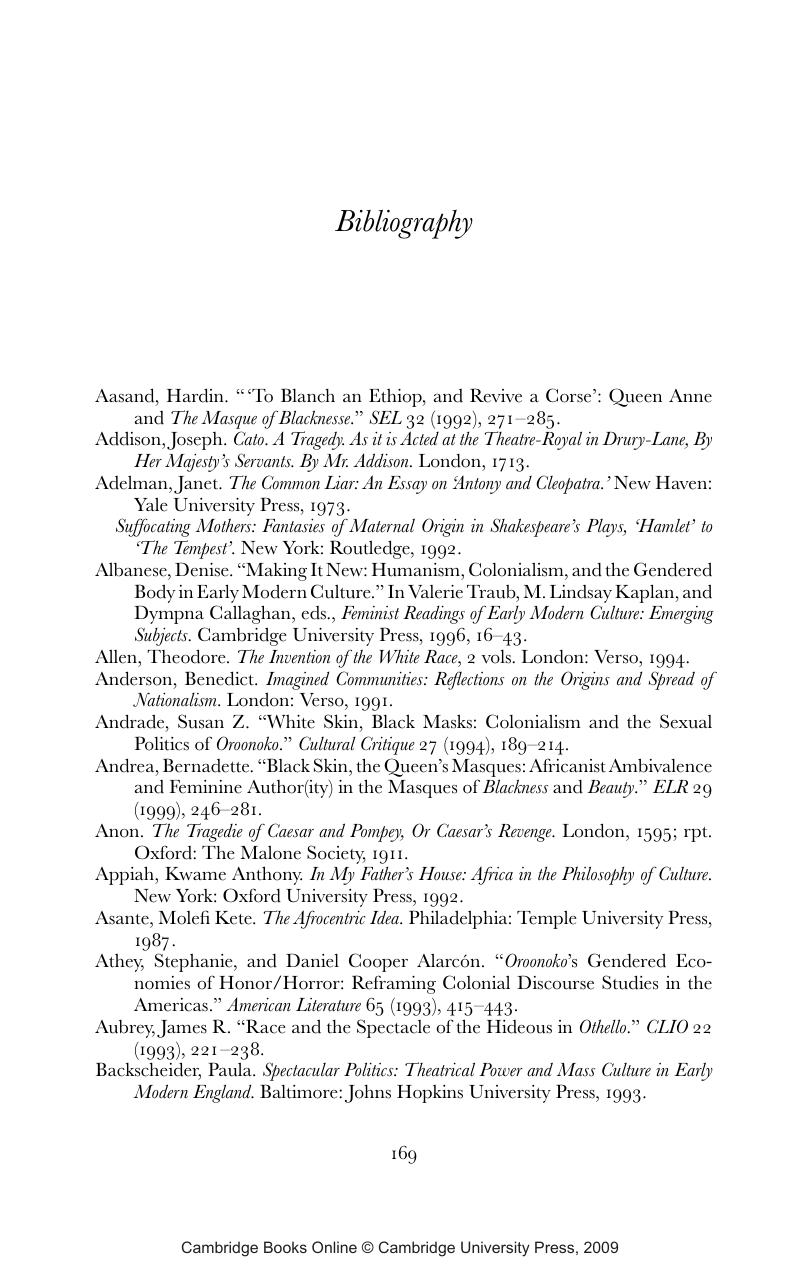Book contents
- Frontmatter
- Contents
- Acknowledgments
- Disclaimer
- Introduction: women, race, and Renaissance texts
- 1 Cleopatra: whiteness and knowledge
- 2 Sex, race, and empire in Shakespeare's Antony and Cleopatra
- 3 Dido and Sophonisba of Carthage: marriage, race, and the bonds between men
- 4 The disappearing African woman: Imoinda in Oroonoko after Behn
- 5 Race, women, and the sentimental in Thomas Southerne's Oroonoko
- 6 Chaste lines: writing and unwriting race in Katherine Philips' Pompey
- 7 The queen's minion: sexual difference, racial difference, and Aphra Behn's Abdelazer
- Conclusion: “The efficacy of Imagination”
- Bibliography
- Index
- References
Bibliography
Published online by Cambridge University Press: 22 September 2009
- Frontmatter
- Contents
- Acknowledgments
- Disclaimer
- Introduction: women, race, and Renaissance texts
- 1 Cleopatra: whiteness and knowledge
- 2 Sex, race, and empire in Shakespeare's Antony and Cleopatra
- 3 Dido and Sophonisba of Carthage: marriage, race, and the bonds between men
- 4 The disappearing African woman: Imoinda in Oroonoko after Behn
- 5 Race, women, and the sentimental in Thomas Southerne's Oroonoko
- 6 Chaste lines: writing and unwriting race in Katherine Philips' Pompey
- 7 The queen's minion: sexual difference, racial difference, and Aphra Behn's Abdelazer
- Conclusion: “The efficacy of Imagination”
- Bibliography
- Index
- References
Summary

- Type
- Chapter
- Information
- Women and Race in Early Modern Texts , pp. 169 - 186Publisher: Cambridge University PressPrint publication year: 2002



